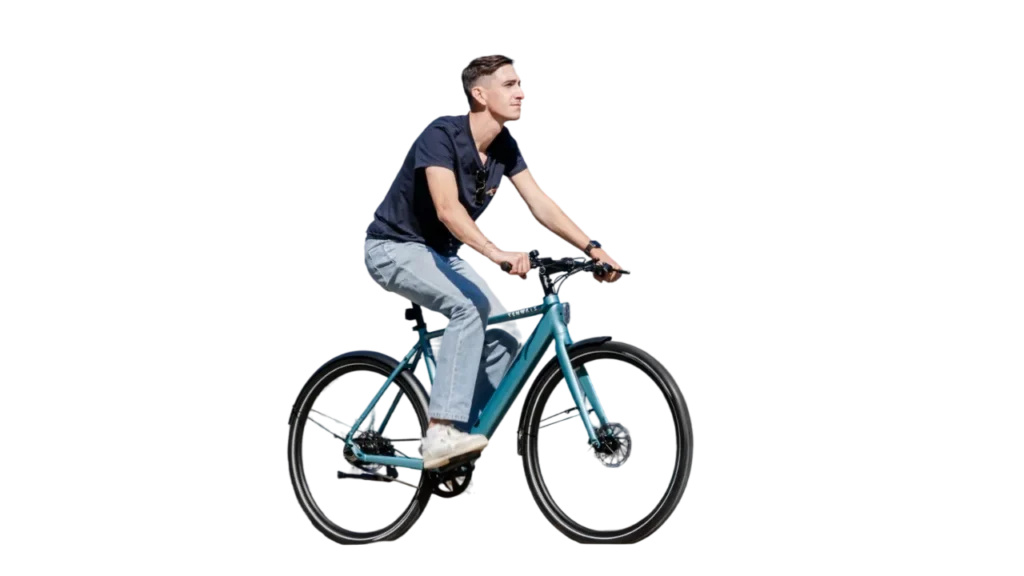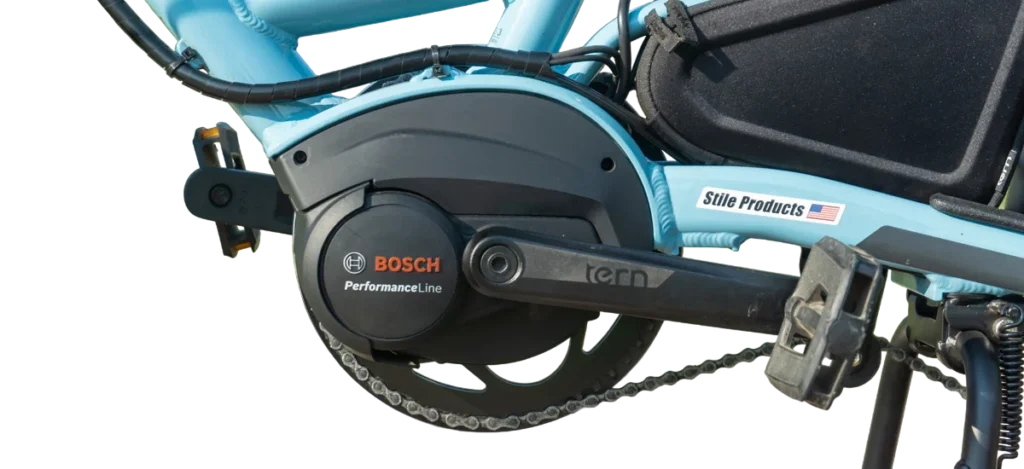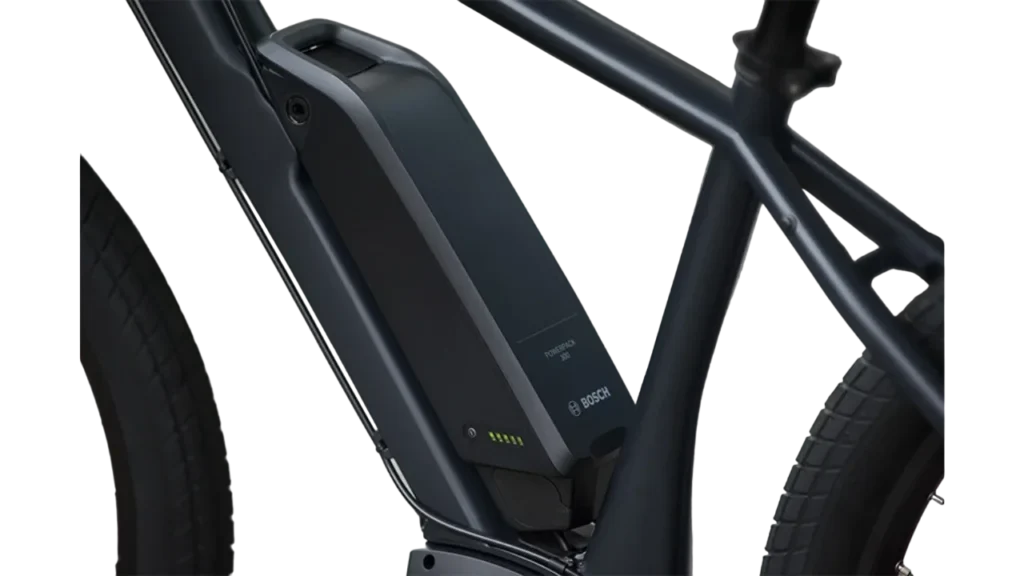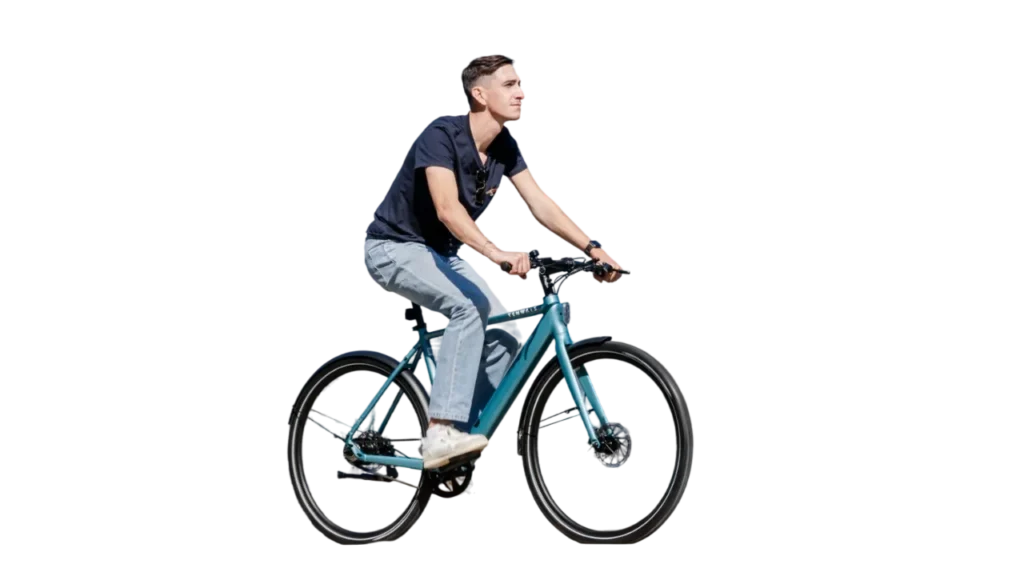Do you know how to choose an electric bike? The process of choosing an electric bike (e-bike) can be both exciting and intimidating.
With the rise in environmentally friendly transportation, e-bikes have emerged as a popular choice due to their combination of physical activity and electric power assistance.
Whether you’re navigating metropolitan streets or exploring rocky trails, the right e-bike can completely change your travel experience.
This guide will explain the key factors to consider, such as class and type of e-bike, motor type, battery life, power, add-ons, weight, comfort, serviceability, sensors and cost. It will enable you to make an informed decision that fits your lifestyle, budget, and riding goals.
Let’s ride forward into the world of electric bikes.

Three Classes of Electric Bikes
Electric bikes are categorized into different classes based on their motor assistance level, mainly for regulatory purposes. This three-class system has been adopted by the majority of bike manufacturers and state, local, and other entities.
Determining the type of e-bike that suits you best is an important decision.
Class 1: The motor offers support while pedaling and disengages when the e-bike hits 20 mph.
Class 2: They also have a pedal-assist mode that goes up to 20 mph, as well as a throttle-powered mode that doesn’t need pedaling.
Class 3: Functions like class 1 with pedal-assist only, but the pedal assistance ceases once the e-bike hits 28 mph.
The majority of new riders begin with a class 1 e-bike. Class 1 electric bicycles are the most economical and, in terms of regulations, widely recognized. You have the option to ride it on city roads and numerous bike trails.
Access to traditional mountain-bike trails is beginning to open up to this type of e-bikes, but it’s not guaranteed for all trails, so it’s important to always verify beforehand.
Class 2 e-bikes are usually permitted in equivalent locations as class 1 e-bikes. This is because both classes have a maximum motor assistance speed of 20 mph.
Class 3 electric bikes are a hit among people who commute and run errands. In contrast to class 1 bikes, they are faster and stronger (and come with a higher price tag). The benefit of enhanced performance is the ability to easily keep pace with traffic.
They are also more adept at climbing and can carry heavier burdens. The compromise is the inability to cycle on the majority of bike paths and mountain biking trails.
Make sure to look into regulations before selecting an e-bike category. The warning with the access information mentioned is that laws, licensing, registration, age limits, and land-management regulations are undergoing changes.
To find information on e-bike regulations in each state, refer to People for Bikes’ state-by-state guide on e-bikes.
- Also Read: Best Class 1 Electric Bikes
- Also Read: Best Class 2 Electric Bikes
- Also Read: Best Class 3 Electric Bikes
Types of Electric Bikes: Which One is Right for You
Electric bikes are also classified based on their overall style and suitability for various types of terrain. Most e-bikes can be classified into one of the following categories, although the specific names may differ by manufacturer.
Commuter Electric Bikes
Commuter electric bikes, a classic type of e-bike, often come equipped with a decent range of 20 to 50 miles, rain fenders, built-in lights, powerful motors, and sufficient torque for climbing hills efficiently.
Commuter e-bikes provide a practical option to cars and public transport, serving as versatile machines. The ideal choice for daily transportation is a commuter e-bike designed specifically for commuting.
Mountain Electric Bikes
The majority of electric mountain bikes are restricted to Class 1 and are made for pedaling. Numerous leading brands are creating these machines from scratch with a focus on ride performance .
Imagine a modern mountain bike design and characteristics enhanced by additional power.
Electric mountain bikes, or e-MTBs enhance the energy you exert while pedaling the bike. When you cease pedaling, the motor ceases providing assistance.
You still need to work for your enjoyment, but you will see a greater reward for the effort you put in.
Hybrid Electric Bikes
An electric hybrid bike is much like a traditional hybrid bike, but it features an electric motor for additional power while pedaling. This can help you become more active or move around more quickly and effortlessly.
Hybrid bikes are suitable for cyclists who like both city and off-road biking. Though not as heavy as mountain bikes, they can still manage rough terrain.
Cargo Electric Bikes
Cargo electric bikes are specifically created to accommodate heavier loads and have more space for carrying items. They can have larger storage areas attached either at the front or back, referred to as ‘longtail’ or ‘front-loader’, or be modified to carry passengers with seats and guards for extra protection.
Typically, they feature a longer body structure designed for heavy loads – slightly unwieldy, but constructed for a specific purpose.
Electric cargo bicycles come with pedal assistance that enhances comfort while transporting heavy loads and simplifies hill climbing.
Cargo bikes can be customized with various accessories to suit your individual hauling requirements, like child bike seats, panniers, boxes, rain covers, footrests, or racks for carrying a surfboard or paddle board.
Folding Electric Bikes
Folding electric bikes are designed to easily fold and unfold, making storage and transport easier. Having a foldable e-bike enables you to have fun and explore new experiences regardless of your location!
Understanding that foldable e-bikes typically have a higher weight compared to traditional folding bikes is important. These bikes often weigh over 65 pounds, requiring significant strength and stability to handle and transport after being folded.
If it is crucial for you to have a folding e-bike that is easy to carry when folded, it is necessary to look for one that is lightweight.
- Also Read: Best Folding Electric Bikes
Cruiser Electric Bikes
Cruisers are ideal for short trips on flat surfaces. They are usually e-bikes in Class 1 with a smaller motor and battery. A cruiser electric bike has a rounded frame, and it resembles a cruiser motorcycle. Like an electric chopper bike, this e bike is designed for leisurely rides on the beach or in the park.
Performance Road Electric Bikes
Performance electric bikes are designed for high speed and covering long distances on smooth paved roads. Frequently, they come with lightweight frames, drop handlebars, and efficient motors. Typically, they tend to cost more.
Performance e-bike also demonstrate reduced air resistance as a result of their design and rider positioning. They are designed to thrive in this field. Performance bikes have more speed and power, and they are equipped with more powerful motors.
Features and Components of Electric Bike
What components make up an electric bike, and which features should you focus on? Remember, your electric bike is much more than just its motor and battery. Here are additional factors to consider when comparing electric bicycles:
Motor Type

Two popular motor types that supply power to an e-bike are mid-drive and hub-drive. Mid-drive motors are situated in the thru-axle, which is where the pedals are attached to the e-bike’s frame.
Some advantages mid-drive provide are a pedal experience closer to natural, increased torque for quicker acceleration, and improved use of the bike’s gears, especially on steep inclines.
Hub-drive motors can be found at the rear wheel’s center. They are usually cheaper than mid-drive motors and are recognized for being durable and reliable.
Many cyclists like mid-drive motors more because they offer a more authentic biking sensation, as opposed to hub drive motors that can feel like being pushed by someone else. Mid-drive motors give the sensation of having very powerful legs!
Battery Life

When purchasing an electric bike, it is crucial to take into account the battery range and power as they are critical features. If you plan to use your e-bike for extended journeys, you will require a model with a longer battery lifespan.
Batteries are measured in watt-hours (Wh). A greater Wh value means a larger capacity. Imagine a 700Wh battery as having a larger gas tank than a 500Wh battery. Most batteries can be charged between 500 and 1000 times before reaching the end of their lifespan.
The distance the battery can reach depends on the weight on the bike, the terrain, and how you ride. The battery of your e-bike will drain more if you heavily depend on the motor for propulsion. However, the greater your battery capacity, the farther you can go without needing to recharge.
A useful guideline for figuring out the amount of power you require is to think about the type of riding you intend to do. If you intend to ride for long distances in hilly regions, opt for a bike with greater power.
The charging time for most batteries typically ranges from three to five hours when starting from empty, with larger batteries requiring even more time. If you intend to ride your e-bike to work, consider purchasing additional chargers or bringing your charger with you.
Certain e-bikes allow cyclists to utilize two batteries simultaneously. This could increase the duration of your journey – and in case one battery runs out of power, you have a spare.
You also have the option of purchasing an additional battery to ensure you have one fully charged or to replace your current one when it reaches the end of its normal lifespan (usually after several thousand charges).
Batteries built into the frame create room for bottle cages or a compact bike bag. However, external batteries are simpler to recharge and interchange.
- Also Read: Cost of Electric Bike Battery
- Also Read: Best Batteries for Electric Bikes
- Also Read: How Long Does an Electric Bike Battery Last
Power
Electric bike motors usually vary in wattage, commonly falling between 250 and 750 watts. 250-watt bikes are highly favored because they are cost-effective and provide sufficient power for flat terrain and minor inclines. They also enable you to optimize the range of your battery.
If you prefer to invest more money, a higher wattage will offer improved acceleration and extra support for climbing steep hills.
Add-ons
Electric bikes come equipped with various accessories that enhance their usability. These accessories include lights, rear rack, LCD, smartphone integration, and security.
E-bikes are usually equipped with lights when purchased, but you also have the option to install your own. If you intend to ride at night, they are a necessary safety precaution.
LCDs are usually mounted on the handlebars. They come in handy for displaying information on battery usage, maximum speed, and pedal assist levels.
More power of electric bikes make them perfect for transporting goods. To make use of this opportunity, you’ll need a rear wheel rack.
Due to their high cost, electric bikes are often targeted by thieves. An essential item is a reliable lock, but also think about utilizing GPS tracking to locate your bike in case of theft.
Certain electric bikes provide smartphone integration. This enables you to connect the bike to your mobile device and download applications that offer helpful data, like GPS locations.
Weight
E-bikes are generally heavier than regular bikes because they contain an electric motor and battery. The motor and battery usually range in weight from 20 lbs to 55 lbs due to their additional weight.
When choosing which bike to purchase, consider if you will need to carry it up stairs or onto a train regularly.
Unfortunately, there is a compromise between weight and power. If you’re looking for a strong bike, opting for a lightweight one may not be the best choice.
E-bikes with batteries in the downtube are preferred by many over those with batteries on the rear rack. Placing batteries above the rear tire on the rear rack can lead to an unbalanced weight distribution. While standing up and pedaling, the whole bicycle could sway from side to side due to the movement of the battery.
The average weights of different type of electric bikes are:
- Electric road bike (high-quality): Approximately 30 pounds
- Electric mountain bike (lightweight): Approximately 40 pounds
- Electric mountain bike (full power): Approximately 50 pounds
- Electric cargo bike: 75 pounds or more
- Electric commuter bike/ electric cruiser bike: 40 to 80 pounds or more.
Comfort
Choose the type of frame (high step, low step, or mixte) that fits best with your comfort, riding style, and mobility needs. Also, consider the weight of your cargo as well – generally, low-step e-bikes make it easier to climb and prevent your cargo from swinging too excessively.
If you intend to ride on bumpy terrain, consider opting for front or full suspension, and evaluate the seat comfort and handlebar style based on your preferred riding style.
Serviceability
Regular maintenance is necessary for all types of bikes, including electric ones. Though buying from a small manufacturer may seem appealing, it is crucial to think about the ability to service the product before making a decision. It is significantly simpler to locate spare components for well-known brands.
You might also want to think about buying from a brick-and-mortar store instead of an online seller for the same rationale. Having a designated place to bring your bike for maintenance may justify spending more money.
It is beneficial to purchase e-bikes from well-known manufacturers because you will get local support in case problems occur. Your local bike shop is allowed to make mechanical adjustments but may have restrictions on software/firmware updates for the brands they sell.
Purchasing from your local bike shop is the most effective way to manage service in future.
Pedal Assist, Throttle, or Both
Pedal assist and throttle both regulate how much power is directed to your e-bike’s motor, but they function in different ways.
The pedal assist works by sensing your pedaling and then boosting the motor’s power to provide assistance. The throttle functions by enabling you to either press a button on your handlebars or twist them in order to manage the speed.
The primary difference between these two categories of electric bicycles is that a throttle allows you to ride without having to pedal. However, with a pedal assist electric bicycle, you still need to pedal in order for the motor to activate and provide assistance while riding.
Cadence Sensors and Torque Sensors
Pedal assist systems (PAS) for electric bikes come in two main types: torque-sensing and cadence-sensing. Torque sensors gauge the force you apply to the pedals, providing a natural riding feel and conserving battery life.
Conversely, cadence sensors count your pedal strokes per minute and are more budget-friendly due to simpler installation. However, they’re not as efficient on inclines, making them ideal for leisurely rides on flat surfaces where less assistance is required.
How Does an Electric Bike Work?
An electric bike is built using regular bike components, an electric motor, and a battery system to give assistance.
With Class 1 and 3 e-bikes, you begin by pedaling to drive the vehicle forward. The pedal motion activated sensors that measure your pedaling effort, which turns on the electric motor. The motor adds power to your pedaling effort, making it easier to ride while increasing your speed.
Most e-bikes feature a control interface on the handlebars that allows you to alter the level of assistance. Most e-bikes use the same derailleurs as mechanical bikes, so you can change gears while riding.
In addition to pedaling assistance, Class 2 ebikes allow you to use a throttle on the handlebars. This enables you to accelerate and maintain a constant speed without pedaling.
- Also Read: How Do Electric Bikes Work
Maintenance of Electric Bike
Electric bikes require more maintenance than regular bicycles since they contain electrical components such as motors and batteries. The frequency of maintenance for your e-bike is similar to that of a standard bike, but the number of components to be examined is more.
Tire Maintenance: You’ll need to check tire pressure, inflate them to the proper level, and inspect tires for wear and corrosion.
Brake maintenance: Brake checkups and adjustments are required for both e-bikes and traditional bikes.
Gears: Check and adjust the gear shifting to ensure smooth and effective riding.
Chain and Drivetrain: To guarantee smooth shifting and pedaling, both e-bikes and normal bikes require cleaning and lubrication of the chain and other drivetrain components.
Suspension (when equipped): Maintain it as per the manufacturer’s guidelines.
Frame and Components: Check the frame, handlebars, stem, and other parts for signs of wear, loose bolts, or damage.
Display and control interfaces: Inspect and clean the display and control interface on the handlebars to guarantee optimal function.
Motor Maintenance: While e-bike motors are supposed to be low-maintenance, it’s important to check for loose connections and inspect the motor casing for damage or debris.
Wiring and Connections: Periodically inspect wiring and connections to ensure everything is secure and in good condition.
Warranty of Electric Bike
The duration of a warranty is an important consideration when purchasing an electric bike. Most manufacturers provide a one- or two-year warranty on their products. However, this does not always include wear and tear or mechanical faults.
Before riding your new bike for the first time, make sure you properly read the manufacturer’s instructions to ensure that you know how to operate it safely and securely. Additionally, keep note of any maintenance records as well as any parts replaced during repairs, since this will aid with future claims.
Warranties vary greatly in terms of what they cover from one manufacturer to the next, so before getting an electric bike, make sure you understand exactly what sort of protection is included.
When you know what to look for, purchasing an electric bike is much easier. Following our above tips will allow you to easily locate one that meets your needs, budget, and lifestyle.
What is Your Budget
Electric bikes come in a variety of designs, sizes, and costs. While some high-end e-bikes can cost several thousand dollars, many affordable electric bikes cost less than $1000.
In general, the more money you spend on a bike, the higher the quality. More expensive models are typically lighter, have a longer battery life, and include more features than inexpensive models.
The key to selecting a nice electric bike is to conduct your research and ensure that you are purchasing from a respected brand. It also depends on the features and specs you want in an e-bike, as well as the amount of money you’re ready to spend.
- Also Read: Electric Bike Cost
Conclusion
When choosing an e-bike, there are several factors to consider, including what you need it for, which class is best for you, if you can keep up with the necessary maintenance, and, of course, whether the price is reasonable.
Electric bikes are a significant investment, ranging from roughly $1000 for an entry-level model to more than $6000 (and possibly much more) for higher-end e-bikes, so you must be certain you’re making the proper decision. Purchasing certified, pre-owned models is another way to find the best low-cost electric bikes on the market.
With more possibilities than ever, choose the bike for the reason you require. Stop by your local bike shops and say hi; they’ll have an expert who can walk you through the various options and get you moving in comfort and flair.

